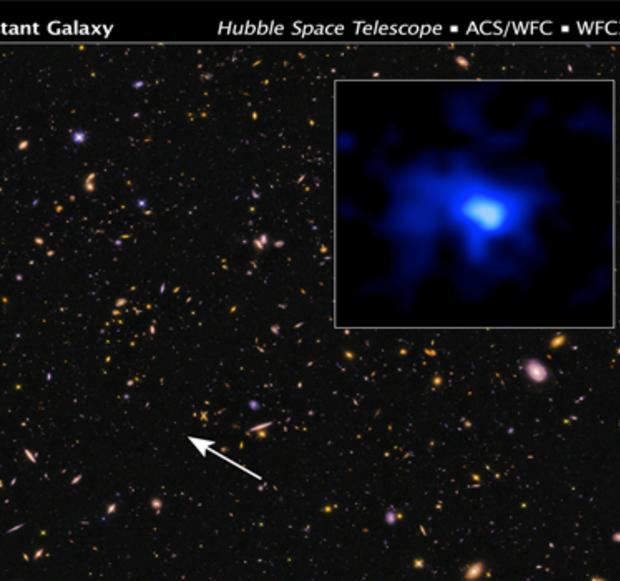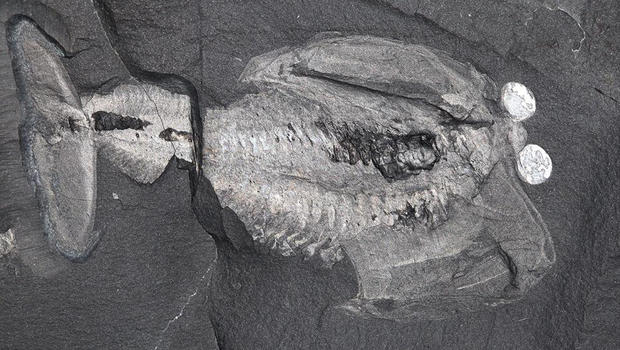Crazy science news you may have missed this week
For decades, scientists have debated what caused the dinosaurs to go extinct 66 million years ago. Most sided with the idea that an asteroid had slammed into the oceans off Mexico, triggering tsunamis, earthquakes, wildfires and temperature fluctuations.
A few scientists, however, held onto the idea that massive volcanic eruptions around the globe, rather than an asteroid, were behind one of the biggest mass extinctions in the Earth's history.
Now, a research team writing in The Geological Society of America Bulletin has come up with a theory that could please both sides, suggesting the asteroid impact triggered the volcanic eruptions that caused the mass extinction, which ended the age of dinosaurs and ushered in the age of mammals.
Read the full story here.
Next...
Ancient penis worm with teeth
You might have heard of vagina dentata -- the mythical "toothed vagina" born of male paranoia. But have you heard of the carnivorous penis-shaped worm known as Ottoia prolifica? This 505-million-year-old phallus-like creature actually had a throat full of teeth.
Now, scientists who took a close look at the teeth of fossilized penis worms (or priapulids) have discovered a new species.
Under a microscope, they looked at 40 O. prolifica fossils and found some unexpected differences, which were be enough for scientists to declare a new species among modern priapulids. And so a new species of ancient Ottoia has been named: O. tricuspida.
Read the full story here.
Next...
A galaxy far, far, far, far away
Using data from NASA's Hubble and Spitzer space telescopes and the Keck I 10-meter telescope at the W. M. Keck Observatory in Hawaii, an international team of astronomers, led by Yale University and University of California scientists, identified what they believe is the most distant galaxy ever measured.
Named EGS-zs8-1, the galaxy, astronomers believe, is one of the brightest and biggest objects in the early universe. The scientists say the galaxy formed between 400 million and 600 million years after the Big Bang, at a time when the universe was only 5 percent of its present age of 13.8 billion years.
Read the full story here.
Next...
Oldest fossilized brains
Some of the world's oldest fossilized brains are helping shed light on how heads evolved in early animals.
The specimens were first discovered in Western Canada's Burgess Shale - a rich source of fossils - and are believed to be more than 500 million years old. They've been in the collection of a Toronto museum and the Smithsonian Institution in Washington.
In a new study, scientists at the University of Cambridge used the fossils to identify a key point in the evolutionary transition from soft to hard bodies in the early ancestors of arthropods, the group of creatures that contains modern insects, crustaceans and spiders.
Read the full story here.
Next...
April flowers bring May showers?
Anyone with allergies knows the pain that pollen can bring this time of year.
Now, researchers from the University of Michigan and Texas A&M suggest that these pesky particles could be playing a more productive role. Their study in Geophysical Research Letters, a journal of the American Geophysical Union, suggests pollen grains released by trees may make it rain.
Allison Steiner, an associate professor of atmospheric, oceanic and space sciences at the University of Michigan, and lead author of the new study found that these tiny particles of pollen "like to take up water and, because they can do that, they can act as seed particles for clouds."
The findings of her study showed how pollen can play a role in cloud formation, which raises new questions about how that might fit into the larger climate picture.
Read the full story here.
Next...
Oregon's self-draining lake
Lost Lake, a shallow lake surrounded by pine trees in western Oregon, comes and goes with the seasons. During the dry summer months, the 85-acre lake completely vanishes and turns into meadow.
The reason? Two hollow lava tubes at the bottom of the lake are constantly draining the lake dry, much like a bathtub left unplugged.
"The lakebed begins to fill in the late fall, when the amount of rain coming in starts exceeding the ability of the lava tubes to drain off the water," said Jude McHugh, a spokeswoman for the Willamette National Forest in Oregon. "And it continues to fill all winter long in a series of rain or snowstorms." Then, as the rainy season peters out, the lake loses its water source, and water disappears down the lava tubes until it's gone.
Read the full story here, and watch the video below:
Next...
Blind mom "sees" baby
These days, most expectant parents take for granted that they'll get a first glimpse of their unborn child through an ultrasound months before the baby actually arrives. But mothers who are visually impaired haven't been able to share that bonding experience -- until now.
A video posted on YouTube by the Brazilian branch of the Huggies diaper company shows the emotional moment when a blind woman got to "see" her unborn son for the first time, thanks to 3D printing technology.
30-year-old Tatiana Guerra lost her sight at the age of 17. In the video, she arrives for an ultrasound during her 20th week of pregnancy. Then a 3D printer converts the ultrasound image into a relief sculpture of the baby's face, and Tatiana dissolves into tears as her fingers trace the features of the son she plans to name Murilo.
Read the full story here.
Want more? There was plenty of crazy science news last week, too.





